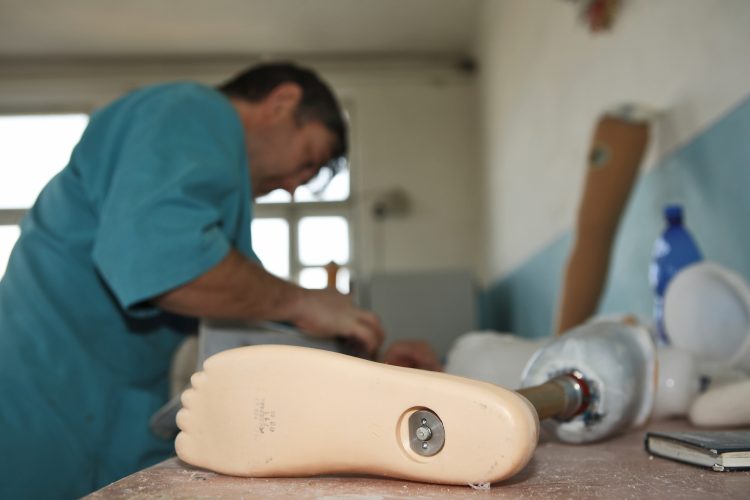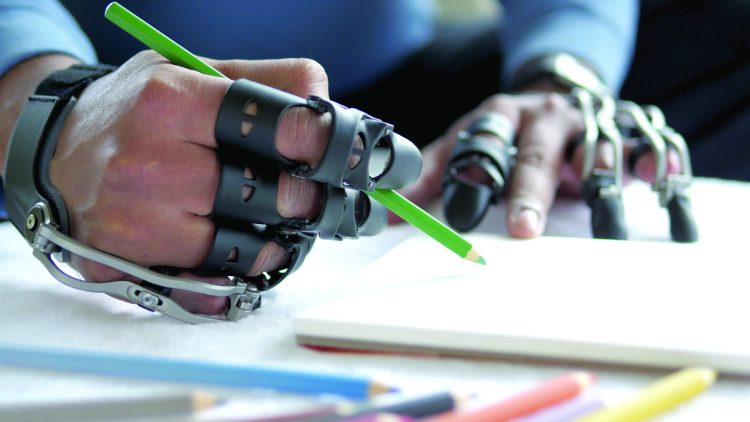- Home
- |
- About us
- |
- News and Events
- |
- Resources
- |
- Contact
- |
- Donate today
- Shop

The type of prosthesis you have will depend on such things as:
K-levels are a rating system used to indicate a person’s potential. The system is a rating scale from 0 through 4 and it indicates a person’s ability to use a lower limb prosthetic device. Your K-level is important because it is the driving factor in the decision on what prosthetic device to provide to you with.
As a lower limb amputee, prostheses, or the components of a prosthesis, are referred to by their ‘K’ classification. This is simply a measure of activity, for example:
Level 0: Does not have the ability or potential to ambulate or transfer safely with or without assistance and a prosthesis does not enhance their quality of life or mobility. A cosmetic non-functional prosthesis could be considered for Level 0 amputee.
K1 Level: Has the ability or potential to use a prosthesis for transfers or walking (ambulation) on level surfaces at fixed cadence (the ability to change your walking speed). Typical of the limited and unlimited household ambulator. Can use their prosthesis in a controlled environment such as in the home, clinic etc, however, will be limited and find it challenging in an uncontrolled environment such as in the community
K2 Level: Has the ability or potential for walking (ambulation) with the ability to navigate (traverse) low level environmental barriers such as curbs, stairs, or uneven surfaces. Typical of the limited community walker (ambulator).
K3 Level: Has the ability, or potential ability, for walking at different speeds (variable cadence). Typical of the community ambulator who has the ability to mobilise (traverse) most environmental barriers and may have employment (vocational), therapeutic, or exercise activity that demands prosthetic utilization beyond simple locomotion (walking). Examples could include the ability to undertake other activities i.e. mow the lawn, play golf, and participate in sport or recreation activities using their prosthetic limb
K4 Level: Has the ability or potential for prosthetic mobility (ambulation) that exceeds basic walking or mobilising (ambulation) skills, and can exhibiting high impact, stress, or energy levels. Typical of the prosthetic demands of the child, active adult, or athlete.
Similarly prosthetic components are also graded into K levels according to these mobility grades. This is why your prosthetist will ask you about your activities and your goals so that you can work together to choose the right prosthesis and one that is safe and effective for your lifestyle.
It is important to note that there are many different kinds of prosthetic devices available, speak to your prosthetic provider about trialling different products prior to making your final decision about which prosthesis is the best for you. Regardless of your level of amputation, if you are going to use a prosthesis you need to use it regularly to maintain your skills
Prosthetic components have weight limits and recommendations based on mobility. Underestimating weight or activity levels could result in a prosthesis that is not strong enough to let you be active safely and this can be dangerous. However, overestimating weight or activity could result in you wearing a prosthesis that is heavier than it needs to be. To achieve the best outcome, you need to be honest in discussions with your doctor and prosthetist.
There are many other examples of how these factors can influence what is best for you. It is not always easy. Sometimes a certain type of prosthesis looks like a great choice, but problems may occur.

People with upper limb amputations may decide not to use a prosthesis at all or may only wear a prosthetic device for certain activities such as: work around the home, riding a bike or doing a particular activity.
Like anything which is used a lot, your prosthesis will suffer wear and tear. Repairs and adjustments are an unavoidable part of an amputee's life. These can usually be arranged directly with your prosthetist. Do NOT attempt your own adjustments. You can easily make the problem worse.
If you inadvertently get saltwater or similar on your prosthesis (unplanned romantic walk on the beach, for example) rinse it off with plenty of freshwater as soon as you can and dry it off. If you can't remove the cover to do this then take it to your prosthetist as soon as possible. Certain components are particularly vulnerable to sand and salt damage.
Also remember that your prosthesis will be made with a particular weight limit in mind. If you are going to do heavy lifting or much more vigorous activity than normal, check that your prosthesis will be able to handle it.
Keep up to date with our latest news, events and information